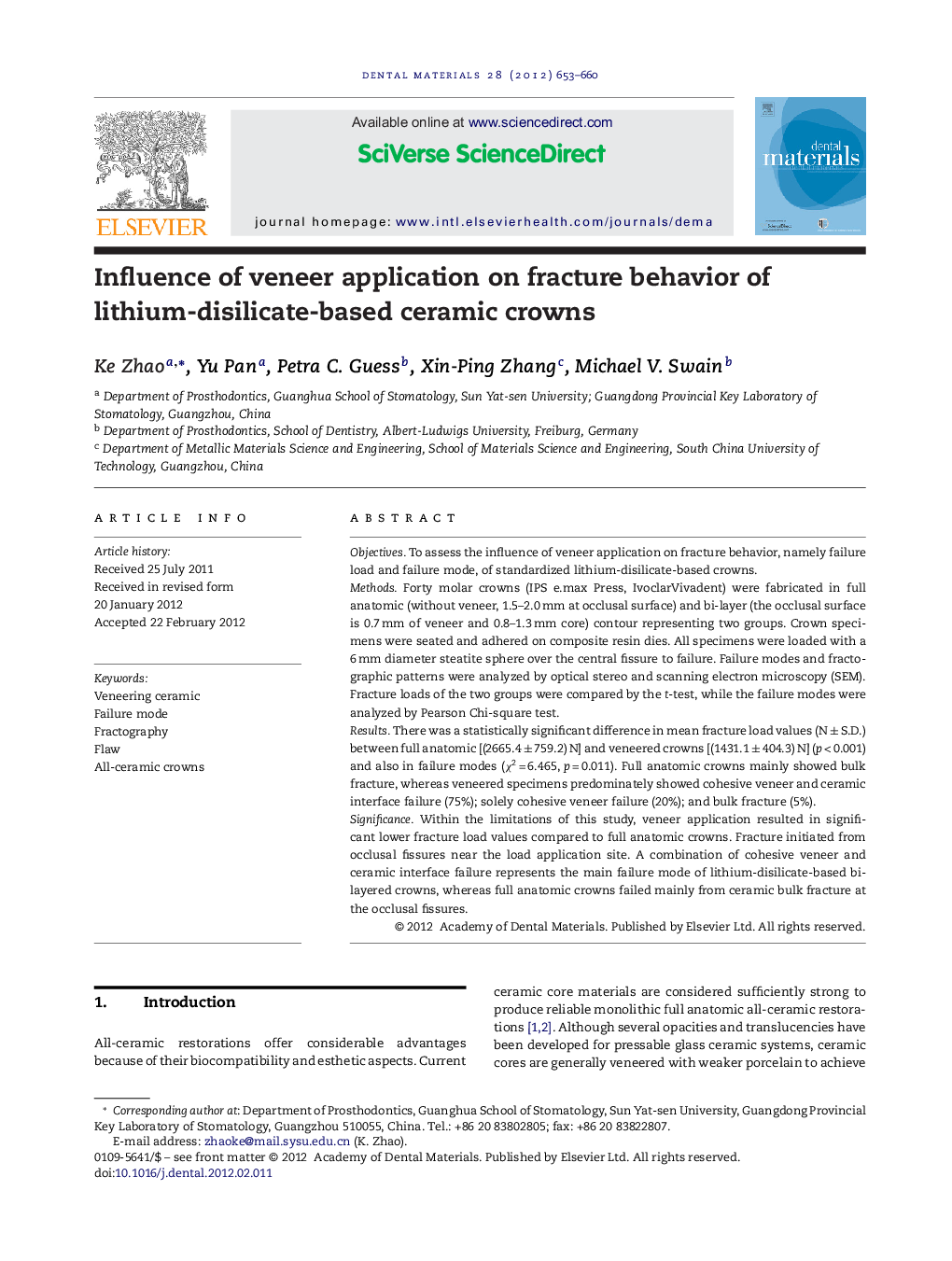| Article ID | Journal | Published Year | Pages | File Type |
|---|---|---|---|---|
| 1421564 | Dental Materials | 2012 | 8 Pages |
ObjectivesTo assess the influence of veneer application on fracture behavior, namely failure load and failure mode, of standardized lithium-disilicate-based crowns.MethodsForty molar crowns (IPS e.max Press, IvoclarVivadent) were fabricated in full anatomic (without veneer, 1.5–2.0 mm at occlusal surface) and bi-layer (the occlusal surface is 0.7 mm of veneer and 0.8–1.3 mm core) contour representing two groups. Crown specimens were seated and adhered on composite resin dies. All specimens were loaded with a 6 mm diameter steatite sphere over the central fissure to failure. Failure modes and fractographic patterns were analyzed by optical stereo and scanning electron microscopy (SEM). Fracture loads of the two groups were compared by the t-test, while the failure modes were analyzed by Pearson Chi-square test.ResultsThere was a statistically significant difference in mean fracture load values (N ± S.D.) between full anatomic [(2665.4 ± 759.2) N] and veneered crowns [(1431.1 ± 404.3) N] (p < 0.001) and also in failure modes (χ2 = 6.465, p = 0.011). Full anatomic crowns mainly showed bulk fracture, whereas veneered specimens predominately showed cohesive veneer and ceramic interface failure (75%); solely cohesive veneer failure (20%); and bulk fracture (5%).SignificanceWithin the limitations of this study, veneer application resulted in significant lower fracture load values compared to full anatomic crowns. Fracture initiated from occlusal fissures near the load application site. A combination of cohesive veneer and ceramic interface failure represents the main failure mode of lithium-disilicate-based bi-layered crowns, whereas full anatomic crowns failed mainly from ceramic bulk fracture at the occlusal fissures.
